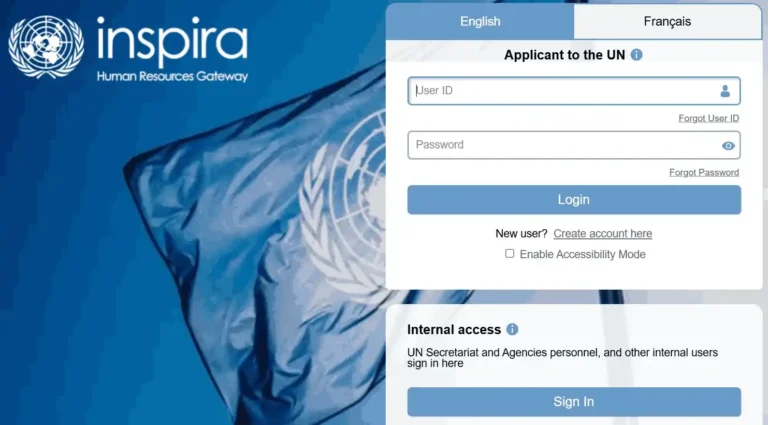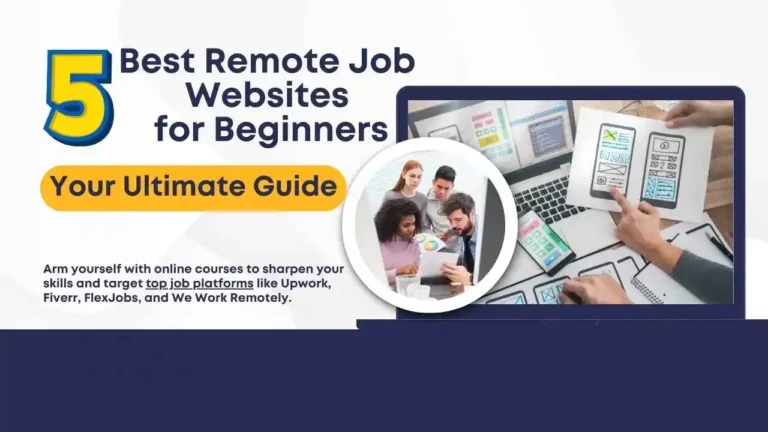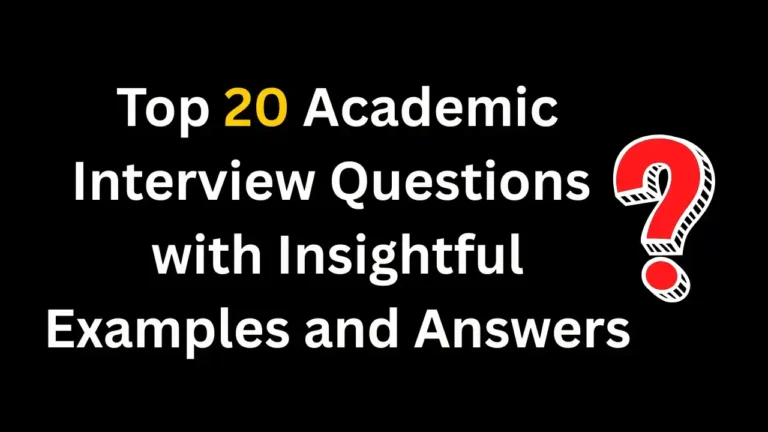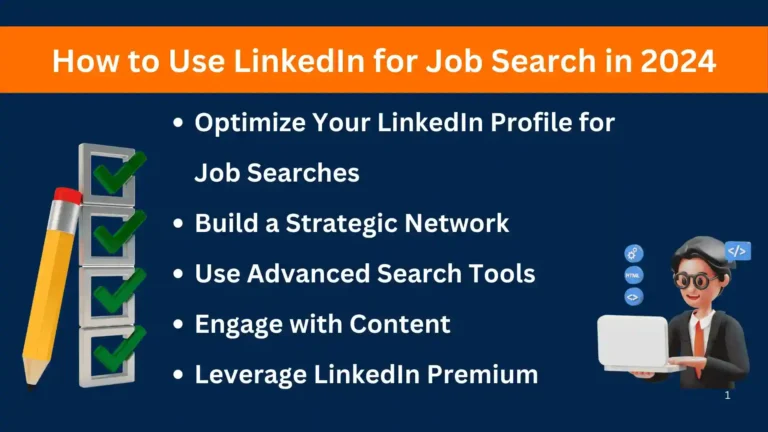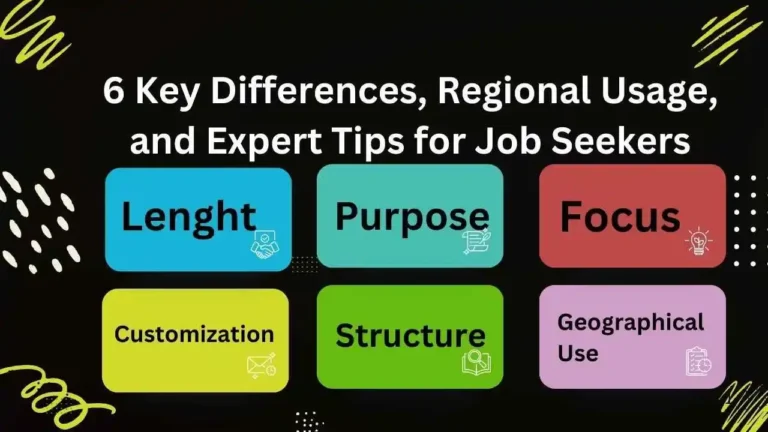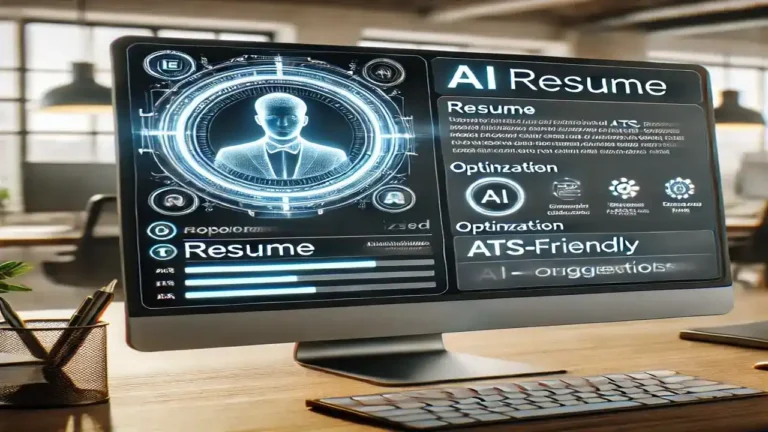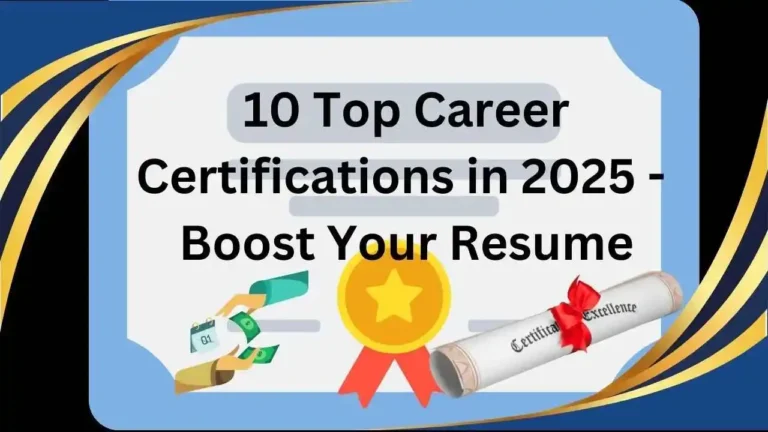Cover letters continue to play an essential role in the competitive job market. Regardless of whether you’re pursuing a specific job opportunity, connecting with industry professionals, or sending an unsolicited application, understanding the different types of cover letters can be the key to standing out from the crowd.
A well-crafted cover letter can capture a hiring manager’s attention and showcase your qualifications in ways that a resume alone cannot. It highlights your personality, provides context for your application, and explains how your experience aligns with the company’s needs. To make the most out of your job search, it’s crucial to understand the different types of cover letters and when to use each.
Read Also below post on 7 Types of Resumes

In this article, we’ll dive into the 10 different types of cover letters, share real-world examples and templates, and answer frequently asked questions. By the end, you’ll have a comprehensive understanding of which cover letter suits your needs and how to tailor it for maximum impact.
Table of Contents
Why Cover Letters Still Matter
Understanding the different types of cover letters is essential for anyone looking to secure a job or professional opportunity. Each type serves a specific purpose and communicates unique information to prospective employers. Knowing which letter to use can significantly improve your chances of getting noticed by hiring managers.
- Cover Letter: This is the most common type of application letter types and is often required alongside a resume. A cover letter allows you to introduce yourself, highlight your skills and achievements, and explain why you’re the best fit for the position. Personalizing your cover letter demonstrates genuine interest in the company and position.
- Letter of Interest (Prospecting Letter): Unlike a cover letter, a letter of interest is sent when there’s no advertised job opening. It expresses your desire to work for a particular company and outlines the value you can bring. These letters are proactive and can lead to hidden job opportunities.
- Networking Letter: This type of letter is used to reach out to professional contacts for job leads, advice, or mentorship. Networking letters are particularly effective when seeking opportunities in competitive industries or when attempting a career change.
- Referral Letter: When someone within the company refers you for a position, a referral letter is the best way to leverage that relationship. Mentioning the name of your referrer in the letter can immediately capture the hiring manager’s attention and add credibility to your application.
- Thank-You Letter: While often overlooked, thank-you letters are critical after interviews. They show appreciation for the opportunity, reinforce your interest in the position, and provide a chance to address any concerns that may have arisen during the interview.
- Resignation Letter: Though it marks the end of your employment, a well-written resignation letter is essential for maintaining professional relationships and leaving on good terms.
Knowing these types ensures that your communication is purposeful and aligned with the situation. It also demonstrates your professionalism and understanding of business communication.
Why You Must Know These Application Letter Types?
Let’s dive deeper into the cover letter types and examples to get the answer.
List: The Types of Cover Letters
- Application Letter Types
- Networking Cover Letter
- Cold-Contact Cover Letter (Prospecting Cover Letter)
- Career Change Cover Letter
- Internship Cover Letter
- Referral Cover Letter
- Executive Cover Letter
- Internal Position Cover Letter
- Thank you Letter
- Resignation Letter
1. Application Letter Types
The most common type, the application cover letter, is used when applying for a specific job opening. This letter should clearly reference the job title and explain why you are the perfect fit. Tailor the content by emphasizing relevant skills and experiences that match the job description.
When to Use:
- Applying for a specific job listed on a company’s website or job portal.
- Tailoring your skills and experiences to match the job posting.
Key Elements:
- A strong opening paragraph expressing enthusiasm for the role.
- Examples of how your skills match the job requirements.
- A closing paragraph that invites the employer to take action (e.g., schedule an interview).
Template Snippet:
Dear [Hiring Manager’s Name],
I’m excited to apply for the [Position Title] at [Company Name]. With my background in [specific skills or experience], I believe I’m well-suited to contribute to [specific company goals]. I look forward to the opportunity to bring my [skill/achievement] to your team.
Sincerely,
[Your Name]
2. Networking Cover Letter
If you’re reaching out to professionals in your field to explore potential job opportunities or gather industry insights, a networking cover letter is appropriate. Focus on building relationships rather than directly asking for a job. Share your background and express a genuine interest in their expertise.
Used to reach out to professionals in your field, this letter focuses on building connections and seeking career advice rather than applying for a role.
When to Use:
- When reaching out to someone in your network for guidance or a referral.
- To expand your professional connections.
Key Elements:
- Introduce yourself and your career goals.
- Mention any shared connections or experiences.
- Request a meeting, informational interview, or advice.
Template Snippet:
Dear [Recipient’s Name],
I recently came across your work in [specific field/project] and admire your expertise. I’m reaching out to learn more about [industry/company] and to seek advice on advancing my career. I would appreciate an opportunity to connect and discuss your insights.
Tip: Mention any mutual connections or shared interests to personalize the letter.
3. Cold-Contact Cover Letter (Prospecting Cover Letter)
Sometimes called a speculative cover letter, this type is sent when no specific job opening is advertised. It demonstrates initiative and enthusiasm. Highlight your qualifications and explain how you can add value to the organization. Customization is essential to make it relevant to the company.
A cold contact cover letter is sent when you reach out to companies without knowing if they have job openings. This proactive approach requires in-depth research about the company and a strong case for how you can contribute to their success.
When to Use:
- When you’re interested in a company but don’t see any job listings.
- To establish a connection with a hiring manager for potential opportunities.
Key Elements:
- Research the company to understand their goals and challenges.
- Highlight how your skills and experiences align with the company’s mission.
- Include a call to action, such as requesting an informational interview.
Template Snippet:
Dear [Hiring Manager],
I admire the innovative work at [Company Name], particularly in [specific area]. My skills in [skill] and experience with [project/achievement] align with your company’s mission. I’d love to explore opportunities to contribute to your team.
4. Career Change Cover Letter
For individuals transitioning into a new industry or role, the career change cover letter addresses transferable skills and relevant experiences. Acknowledge the change and explain how your previous experience equips you to excel in the new position.
When to Use:
- When applying for roles in a field different from your previous experience.
- To address gaps in industry-specific experience while highlighting your adaptability.
Key Elements:
- Focus on transferable skills relevant to the new role.
- Address your passion for the new industry.
- Include examples of how you’ve successfully adapted to new challenges in the past.
Template Snippet:
Dear [Hiring Manager],
After a rewarding career in [current field], I am eager to bring my [transferable skills] to [new field]. My experience in [specific achievements] has equipped me with [key skills] that align with the requirements of [Position Title].
5. Internship Cover Letter
If you’re a student or recent graduate applying for an internship, use an internship cover letter. Focus on your educational background, relevant coursework, and any hands-on projects or volunteer work that showcase your potential.
When to Use:
- When applying for internships at companies or organizations.
- To emphasize your academic background and potential.
Key Elements:
- Highlight relevant coursework, projects, or extracurricular achievements.
- Emphasize your enthusiasm for gaining hands-on experience.
- Explain how the internship aligns with your career goals.
Template Snippet:
Dear [Hiring Manager],
As a [university major/year], I am excited to apply for an internship with [Company Name]. My coursework in [field] and experience with [project] have prepared me to contribute to your team while gaining valuable industry insights.
6. Referral Cover Letter
When someone within the company refers you to a position, a referral cover letter is your best option. Mentioning a mutual connection at the beginning immediately builds credibility and makes your application more noticeable. Highlight how your skills complement the role while emphasizing the relationship with the referrer.
When to Use:
- When a friend, colleague, or mentor has recommended you for a position.
- To make your application stand out in a competitive job market.
Key Elements:
- Mention the name of the person referring you in the opening paragraph.
- Briefly explain your connection to the referrer.
- Focus on why you’re a good fit for the role based on the referrer’s insights.
Template Snippet:
Dear [Hiring Manager],
I was excited to learn about the [Position Title] at [Company Name] from [Referrer’s Name]. Based on their recommendation and my skills in [specific area], I am confident I would be a strong fit for the role.
7. Executive Cover Letter
Tailored for senior-level positions, an executive cover letter emphasizes leadership achievements, strategic insights, and industry expertise. Highlight your ability to drive results and manage teams effectively.
When to Use:
- When applying for C-suite, VP, or director-level roles.
- To highlight your leadership and business impact.
Key Elements:
- Focus on strategic achievements (e.g., increasing revenue, improving efficiency).
- Showcase leadership, team-building, and decision-making skills.
- Demonstrate alignment with the company’s long-term vision.
Template Snippet:
Dear [Hiring Manager],
With over [X years] of leadership experience in [industry], I am excited about the opportunity to drive [specific goal] at [Company Name]. My track record of [achievement] aligns with your company’s objectives.
8. Internal Position Cover Letter
An internal position cover letter is used when applying for a new role within your current organization. Highlight your achievements and contributions to the company, demonstrating your value and commitment. Emphasize your knowledge of the company’s culture and operations, and explain how your experience makes you a strong candidate for the new position. Maintaining a professional and respectful tone is crucial, as you are seeking advancement within the same organization.
When to Use:
- When applying for a new role or promotion within your current organization.
- To highlight your contributions and commitment to the company.
Key Elements:
- Focus on your achievements in your current role.
- Explain how your skills align with the new position.
- Express enthusiasm for continuing your career growth within the company.
Template Snippet:
Dear [Hiring Manager],
Over the past [X years] at [Company Name], I’ve successfully contributed to [project/achievement]. I am eager to bring my experience and dedication to [new position] and continue driving results for our team.
9. Thank you Letter
Thank-you letters, though frequently overlooked, are a critical part of the interview process that can make a lasting impression on potential employers. Sending a thoughtful thank-you note after an interview demonstrates your appreciation for the opportunity and respect for the interviewer’s time. In a competitive job market, this simple gesture can distinguish you from other candidates and reinforce your interest in the position.
One of the primary benefits of a thank-you letter is that it allows you to express gratitude to the hiring manager or panel for considering your application. It shows that you value the effort they took to meet with you, listen to your experiences, and assess your suitability for the role. Employers appreciate candidates who are polite and professional, and this follow-up communication often leaves a positive impression.
Beyond showing appreciation, a thank-you letter is an excellent opportunity to reinforce your interest in the role. Interviews can be intense and fast-paced, and candidates may not always have the chance to fully articulate their enthusiasm for the position. By writing a thank-you letter, you can reiterate your passion for the job and highlight specific points from the interview that align with your skills and career goals. Mentioning key discussions or memorable moments from the interview shows that you were attentive and genuinely engaged.
Additionally, thank-you letters offer a valuable chance to address any concerns or clarify points raised during the interview. Perhaps there was a question you struggled to answer or an important achievement you forgot to mention. Including this information in your follow-up letter can help rectify any misunderstandings and provide a more comprehensive picture of your qualifications. This proactive approach demonstrates problem-solving skills and a commitment to presenting yourself in the best light.
Lastly, a well-crafted thank-you letter helps maintain communication with the employer, keeping your name fresh in their minds as they make their hiring decision. In some cases, hiring managers receive several qualified applications and may face difficulty choosing between candidates. A thoughtful and personalized thank-you letter can be the nudge they need to select you for the role.
When to Use:
- After an interview for a job, internship, or promotion opportunity.
- When seeking to maintain a positive impression and reinforce your interest in the role.
- To address any concerns or clarify points discussed during the interview.
Key Elements:
- Show genuine appreciation for the interviewer’s time and opportunity to meet.
- Reinforce your enthusiasm for the role and the organization.
- Highlight key discussion points that align with your skills and experience.
- Address any unanswered questions or clarify responses from the interview.
Template Snippet:
Dear [Interviewer’s Name],
Thank you for taking the time to meet with me on [date] to discuss the [position name] role at [Company Name]. I truly enjoyed learning more about the team and the exciting opportunities your organization offers.
Our conversation reinforced my enthusiasm for the position, particularly when we discussed [specific topic from the interview]. I am confident that my experience in [mention relevant skills or achievements] makes me well-suited to contribute meaningfully to your team.
Please feel free to reach out if you have any additional questions or need further information from me. Thank you again for your time and consideration. I look forward to the possibility of contributing to [Company Name].
Warm regards,
[Your Name]
10. Resignation Letter
A resignation letter is a formal document used to inform an employer about your decision to leave the company. It should clearly state your last working day and express gratitude for the experiences gained.
A well-crafted resignation letter helps maintain positive relationships and ensures a smooth transition. Offering assistance during the handover period demonstrates professionalism. Keeping the tone respectful and appreciative can leave a lasting positive impression on your employer and colleagues.
When to Use:
- When formally leaving your current job or position.
- To ensure a smooth and professional transition.
- To maintain positive relationships with your employer and colleagues.
Key Elements:
- Clearly state your intention to resign and mention your last working day.
- Express gratitude for the opportunities and experiences gained.
- Offer assistance during the transition period to ensure a seamless handover.
- Keep the tone positive and professional.
Template Snippet:
Dear [Manager’s Name],
I am writing to formally resign from my position as [Job Title] at [Company Name], effective [Last Working Date].
I am incredibly grateful for the opportunities and experiences I’ve had during my time here. Working with such a talented and supportive team has been invaluable for my professional growth.
I am committed to ensuring a smooth transition and will gladly assist in training my replacement or wrapping up ongoing projects.
Thank you once again for the support and trust you’ve extended to me. I look forward to staying connected and wishing [Company Name] continued success.
Sincerely,
[Your Name]
Additional Tips for Writing Cover Letters
- Personalization: Address the hiring manager by name and tailor the letter to the company’s goals.
- Be Concise: Stick to 3–4 paragraphs and avoid repetition.
- Quantify Achievements: Use numbers to showcase your impact (e.g., “Increased sales by 30%”).
- Proofread: Errors can leave a poor impression. Always proofread before submitting.
Real Success Stories
- Samantha’s Career Change Success:
Samantha transitioned from retail to IT using a career change cover letter that emphasized her customer service skills. After applying to 10 companies, she landed an entry-level IT support role. - John’s Networking Win:
John sent a networking cover letter to a LinkedIn connection at a Fortune 500 company. This led to an informational interview and, eventually, a job offer.
FAQs About Different Types of Cover Letters
Do I need a cover letter for every job application?
A: Yes, especially if the job posting requires it. A personalized cover letter strengthens your application. These types of cover letters for jobs play important role and provide a sense to review your resume for further consideration.
Can I use the same cover letter template for multiple jobs?
A: No, tailor your cover letter to each role by addressing the company’s specific needs. You can consider the list given at this page. The cover letter types and examples are highlighting the difference between types of letters for jobs. So, you can make a sense and distinguish each letter for your specific needs. You can customize and tailor these template snippet to fulfill your requirements for the different role available in your niche.
Are cover letters necessary for remote jobs?
A: Absolutely. They demonstrate your ability to communicate effectively—an essential skill for remote work. As the technology and trends for live style evolve nowadays and getting notice dynamically, the need of specific different types of cover letters is increased more and more with depth of the functional knowledge of the different life domains. So, We must take care these important factions and consider the separate cover letter for a separate role and switching the work field.
Conclusion
Understanding the 10 different types of cover letters ensures that you use the right approach for each situation. Whether you’re applying for a job, seeking an internship, or networking, the appropriate cover letter type can help you stand out and make a lasting impression.
By tailoring your application letter types to the role and purpose, you’ll increase your chances of landing interviews and advancing your career. Remember, your cover letter is not just an introduction—it’s an opportunity to showcase your unique value and connect with potential employers. So review these cover letter types and examples to pick one for your need and get started developing your own cover letter.
What are your thoughts on the different types of cover letters? We’d love to hear from you! Share your insights in the comments, and feel free to reach out if you need any guidance or support—we’re here to help!




